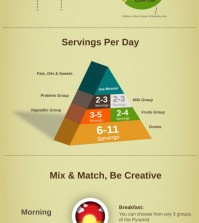- Make It Yourself Lavender Heart-Shaped Bath Bombs!
- 20 Things You Never Knew About “Down There”
- 12 Best Foods For Those Suffering From Arthritis Pain
- 12 Personal Hygiene Mistakes Almost Everyone Makes (Mom Never Told You About #4!)
- 15 Medicinal Plants And Herbs From The Cherokee People
- 12 Mind-Blowing Benefits Of Drinking Coconut Water During Pregnancy
- 12 Outstanding Winter Foods That Won’t Fatten You Up Like A Christmas Turkey
All Natural Cold and Flu Remedies for Kids

Photo credit: bigstock
It happens to all of us at one time or another. One minute, your kid is jumping around the house playing a game of hide and seek with the cat, the next minute, they come to you coughing and sneezing with a fever of 101. With more than 200 viruses hanging around at any given time, it’s no wonder that colds and flus are so common, especially during this time of year when people are huddled together in one room enjoying the holidays.
There are plenty of ways to help ease those ugly cold and flu symptoms however. Everyone wants to take special care of their children and not use any of those toxic over the counter cold treatments, but it’s so painful to sit and watch your child suffer with a stopped up nose or coughing all night long, unable to sleep. There are plenty of natural stuffy nose remedies that can give both your child, and you, some relief. Keep reading for the best natural home remedies you can give your little one to help make them more comfortable.
1. Rest
It takes energy to fight off infections and viruses. When your child is resting, their body can spend more energy fighting off the cold. This is not always easy for small children as they quickly become bored lying in bed. This is a great time to let you child watch their favorite movie or TV program again and again. Try to occupy them with books, coloring books and crayons, some favorite toys, or puzzles.
Sometimes your child just doesn’t want to lie in bed any longer. If that’s the case, try to make resting a game. Build a “tent” in the living room with a sheet and some chairs and allow them to bring pillows and blankets inside and watch TV from there or bring some toys into the tent. Sometimes your child wants company more than anything else. If you can, spend some time reading to them or make an exception and let the dog come inside and sleep in their bed.

Photo credit: bigstock
2. Neti Pot
This is best for kids about 4 or 5 years up and older.
A neti pot flushes a mild saline solution through the sinuses, moistening the tissues and washing away mucus. You can buy saline solutions at your drug store, or simply use distilled water and mix about ½ a teaspoon of salt into 1 cup (8 ounces) of water. Your child must be willing to do this, don’t force them as this can damage their nasal passages.
Demonstrate how to do it on yourself first, and then see if your child would like to try it.
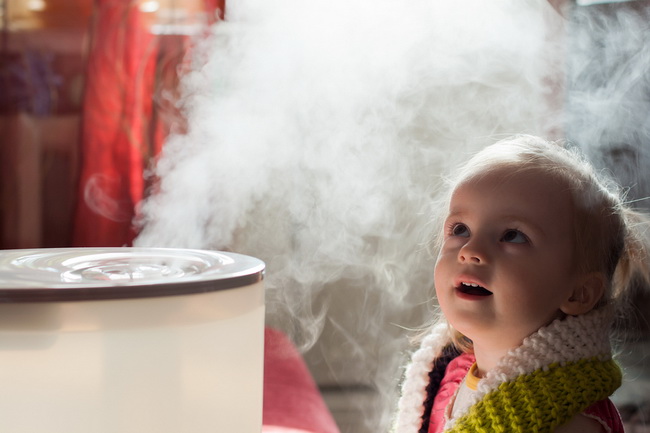
Photo credit: bigstock
3. Steam
A cool mist humidifier is super helpful when it comes to relieving those stuffed up heads. Some room humidifiers have a special compartment for essential oils. If yours does, try adding a few drops of menthol or eucalyptus oil to really help clear up sinuses and stop infections.
Depending on the age of your child, you could run a hot, steamy shower or bath and either bath with your child or just sit in a chair and let them breathe in the steam. Again, a few drops of eucalyptus, menthol, or peppermint oil in the water really helps clear up a stuffy head.

Photo credit: bigstock
4. Chicken Soup and Other Liquids
Your grandma was right, chicken soup really does help with cold symptoms.
The steam from some really hot soup will help loosen congestion and the broth hydrates the body as well as provides easy to digest protein and vitamins.
SEE ALSO: Top 15 Natural Remedies for the Everyday Common Cold
Keeping your child hydrated at this time is vital to help flush out germs, so don’t be afraid to push your child to drink water, fruit juice, broths, herbal teas, milk, or even jello or frozen fruit juice bars.
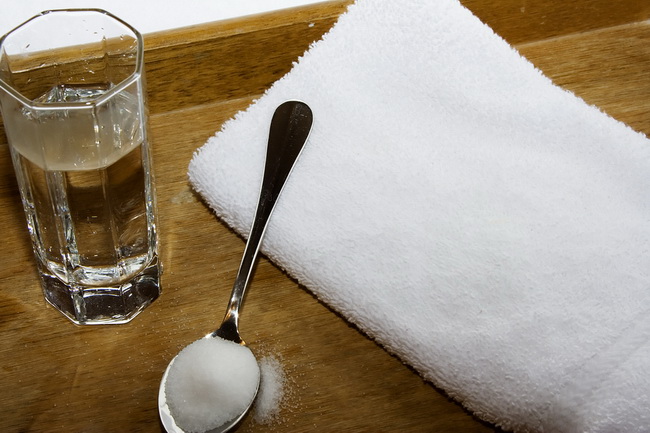
Photo credit: bigstock
5. Saline Nasal Sprays
Unlike those steroid filled over the counter nasal sprays that actually make problems worse, saline sprays can be made at home and used repeatedly as there are absolutely no side effects.
Mix two teaspoons of non-iodized salt with one pint of water. Put in a spray bottle and you are good to go.
Ask your child to blow their nose first, and then spray one nostril at a time.

Photo credit: bigstock
6. Honey
Never give honey to a child less than one year of age!
Honey is a terrific way to stop nagging coughs and help ease sore throats. Read more about honey benefits.
If your child is 2 years of age or older, try giving them some warm tea sweetened with a good dose of honey and a squirt of lemon to help sore throats and stop coughs.
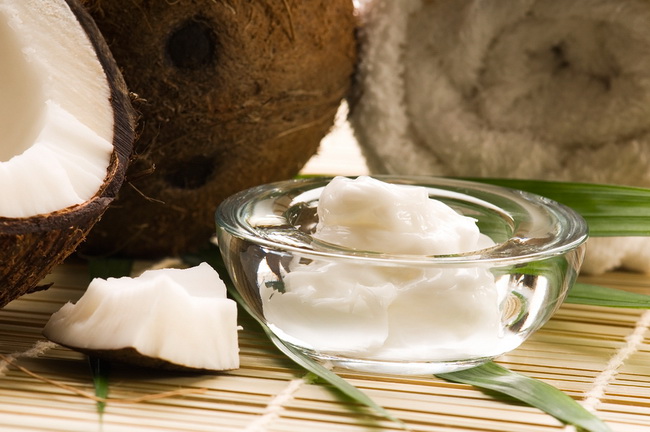
Photo credit: bigstock
7. Vapor Rub
These rubs can help your child sleep better at night by warming the chest and relieving congestion. You don’t have to use that petroleum based rub your mom most likely used on you.
You can mix up your own right at home! Mix together ½ cup of coconut or olive oil, 2 tablespoons of beeswax pastilles, 20 drops of eucalyptus oil, 20 drops of peppermint oil, 10 drops of rosemary oil, and 10 drops of cinnamon oil. Melt the beeswax and oil together over low heat, then mix in the essential oils. Remove from heat and put into tins or glass jars. When completely cool, rub this mixture onto your child’s chest at night and they will sleep like a baby.
Don’t use this on children less than 3 years of age as it might be too strong for their sensitive skin. Test on a small area first to be certain your child won’t have an adverse reaction.
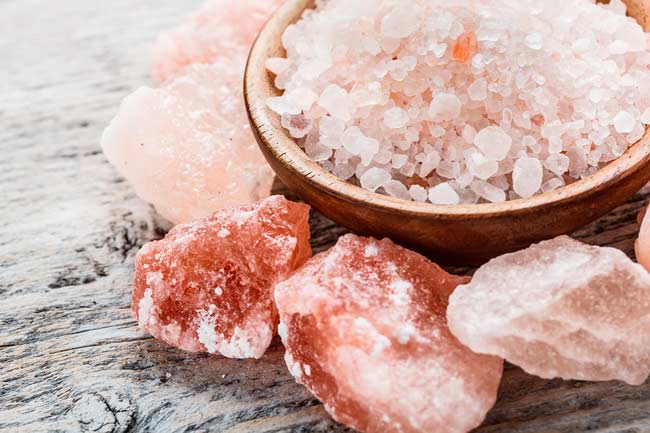
Photo credit: bigstock
8. Gargling with salt water
This is a very old fashioned, yet effective, remedy for relieving the pain of sore throats and promoting healing.
Your child should be about 4 or 5 years of age to use this method as they need to learn how to gargle. Most children can manage this task by the time they reach school age, but sometimes they learn earlier.
Combine ½ teaspoon of salt in a glass of warm water and stir well. Encourage your child to gargle three or four times per day while they are sick. Be sure to teach them to spit out the water and not swallow it!

Photo credit: bigstock
9. Elevate the Mattress
Putting a couple of 2 or 3 inch blocks of wood under the legs of your child’s bed will help sinuses to drain more quickly.
A yoga mat, rolled up blanket or towel, or wedge of foam will help also if your child will sleep on it.
Sometimes they simply roll off the wedge and end up sleeping in a bunch at the foot of the bed.
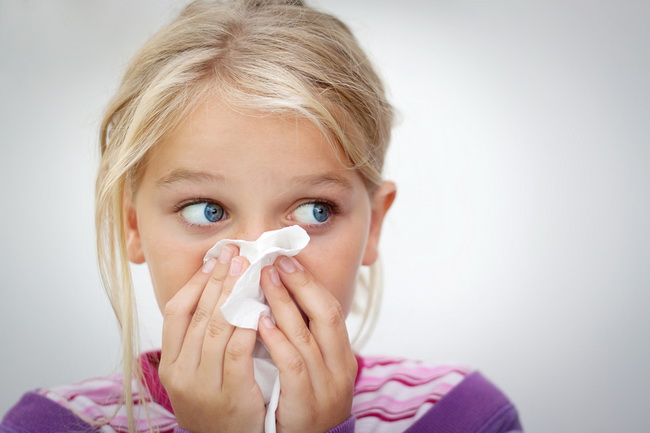
Photo credit: bigstock
10. Nasal Strips
They make these for both adults and for children.
Nasal strips look something like bandages and they are placed across the bridge of the nose. These strips life up the sides of the nose and open up nasal passages so your child can breathe, and therefore sleep better.
These are perfect for kids who don’t want to use neti pots or nasal sprays.
When to call 911
- If a toddler cannot complete a sentence because they cannot breathe
- If your child stops breathing for more than 10 seconds
- If your child develops a fever of more than 104
- If an infant is making grunting noises and appears to be struggling to breathe
- If your child has blue or purple colored nail beds, lips, or gums.
Sources:
FDA: “Public Health Advisory: Nonprescription Cough and Cold Medicine Use in Children.”
Johns Hopkins Children’s Center: “Safest Ways to Fight Colds and Flu in Kids? Ditch Over-the-Counter Meds.”
WebMD Medical News: “Panel: No Cold Medicine for Young Kids.”
FDA: “OTC Cough and Cold Products: Not for Infants and Children Under 2 Years of Age.”
American Academy of Pediatrics: “Parenting Corner Q&A: Childhood Infections.”
Drugs.com: “How to Take an Axillary Temperature”




